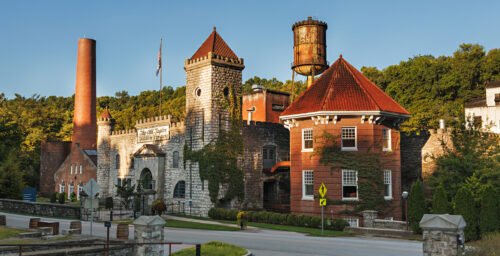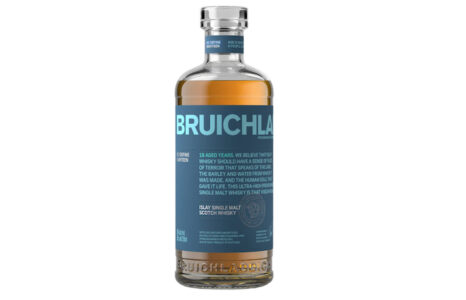As we continue our week of year end wrap ups on whiskey coverage, we’ve so far brought you our reviewer team picks and also the most craptastic whiskies of 2016. Now we turn our attention to the cream of the crop, the most highly rated bottlings we got our hands on this year among the over 360 reviews we wrote up.
As with the worst of article, we’ve ranked them below in a top 10 format, leading upwards to our highest scored bottling(s) for the year. We’ve included tasting notes and thoughts on each one as well as was presented at the time the review was published.
 #10 – Balcones Texas Blue Corn Bourbon (Score: 95/100)
#10 – Balcones Texas Blue Corn Bourbon (Score: 95/100)
Nose: Less hot on the nose than its cask strength Staff Selection sibling, Texas Blue Corn quickly slides past the initial ethanol burn of its ABV and onto the real characteristics that define it. Burnt sugar atop rich, buttery spiced custard make for a creme brulee effect at first sniff. Baked pumpkin, young green pear, and vanilla bean-flecked cream combine to highlight a very autumnal nose. However, unlike most scents described as autumnal, Texas Blue Corn lacks the cliche “baking spices” element of the fall-forward nose—instead the rich, fatty, pumpkiny cream elements make for a unique and refined nose.
Palate: On the palate, a big wave of salty, rich flavor that is deeply blue corn hits. Blue corn masa, cigars, and leather lend incredible body to the dram. The interplay between sweet and salty creates a pretzels-dipped-in-caramel element that is genuinely addicting. Texas Blue Corn is a sweet and savory taste bomb like no other.
Finish: The finish is lingering salt, buttered toast, and oh so satisfying—a touch hot on the finish, but nothing like would be expected from a cask-strength whiskey.
Thoughts: In my tasting notes for Balcones’ Texas Blue Corn Bourbon I wrote both that I could drink this spirit every day of my life and that “corn is the best!”, and I continue to stand by those comments. This whiskey is unlike any other I’ve tasted, and one that has incredible character in addition to an interesting backstory. Perfect for craft whiskey enthusiasts in addition to those seeking the highest quality drams available, this whiskey is a winner all around. An absolute star and a new classic in my book.
#9 – Booker’s Rye (Score: 95/100)
Nose: Although immediately spicy and grain-forward on the nose, the dram hardly seems as vaporous as its cask-strength of 136.2 proof made me believe it was going to be. Full, heavy burnt sugar elements rise to the top of the nose, backed by slight styrofoam notes.
After opening, orange marmalade and chocolate-covered malt marry for a rich, rye-heavy nose. Raisin bran and fresh, sweet hay round out the nose. Altogether, the nose proved sweet, spicy, and complex.
Palate: Spicy to start on the palate, as well as to finish—but pure velvet in the middle. Hot to start, with sweet rye cream on the way down, then a tingling, tannic finish. The incredible mouthfeel is matched only by the depth of the flavor present the entire tasting. Graham crackers with sea salt meld with creamy, almost sweet marscapone. The creamy mouthfeel and rich, salty elements of the dram combine to create a full snack-time experience: rye bread with Nutella and flakey sea salt, and a big ol’ glass of whole milk.
Tannic, spiced, and grain-forward on the finish, Booker’s Rye is without question an after dinner or bedtime dram. Decadent, creamy, and like a big bedtime hug from a pretzel.
Thoughts: While I never thought that I would taste a rye that was more dessert-like or outstanding than Angel’s Envy Rye, I do have to say that Booker’s might be giving Angel’s Envy a run for their money in terms of taste. In terms of price, Angel’s Envy still wins for value at under $100 per bottle.
For rye first-timers, Booker’s certainly appears to have smashed rye out of the park. Congratulations to them, and to whoever out there can snag a sip of this wonderful rye before it’s gone.
 #8 – Midleton Dair Ghaelach Irish Whiskey (Score: 95/100)
#8 – Midleton Dair Ghaelach Irish Whiskey (Score: 95/100)
Nose: Up front on the nose is new oak and a touch of ethanol, likely attributed to the higher proof. Chocolate orange, espresso, and cream blossom through the ethanol tinge. Warm wildflower honey rounds its edges. The nose has a lovely, bold interplay between chocolate, coffee, and orange. After opening for a short time, yeasty bread dough, specifically sourdough starter, comes through, followed by charcoal, very sweet oak, and orange blossom water.
Palate: Immediately incredibly creamy on the palate, Dair Ghaelach has a slight proof burn, but only briefly. The creamy, soft mouthfeel plays into the flavor of heavy cream and orange foam. Creamy, sweet, and citrusy on the front of the palate, the dram transforms into an earthy, complex mixture of coffee grounds, sweet orange, oak char, and overwhelming tobacco leaf. The finish goes from deeply intense tobacco leaf to a lingering sweet cream and coffee effect that seems to go on forever. Very satisfying.
Thoughts: Earthy, creamy, and complex, Dair Ghaelach is a fully developed dram, and a whiskey that tastes the drinker through a journey. This whiskey was a delight to drink, and leaps and bounds above the majority of whiskies I’ve tasted in recent history. Dair Ghaelach could surely convert any serious whisk(e)y drinker out there to the world of Irish whiskey.
#7 – Knob Creek 2001 Limited Edition Bourbon (Score: 95/100)
Nose: Sweet flavors like vanilla, honey, and caramel predominate up front. The sweetness is far from overbearing, however, and I also get some heady stone fruit—ripe peach and plum—especially after a few minutes in the glass. There is a definite, if subtle, oakiness underlying everything.
Palate: Vanilla and honey also predominate on the palate, but again, they’re well-balanced by more ripe fruit and some warm baking spice. Toasted oak is a little more noticeable on the palate, along with a just a hint of something savory and salty, almost like parmesan cheese. The texture is smooth but mouth-coating, and wood lingers on the long finish.
Thoughts: To put it bluntly, this is the kind of bourbon that makes you not want to drink other bourbon. The bright caramel and vanilla you expect are rounded out expertly with darker notes, some of them unexpected in the best way. I’d be curious to give batch 2 a try, as I find this sample had just enough oak to balance the sweetness. In any case, this is a very nice whiskey, one well worth a try if you can get your hands on it.
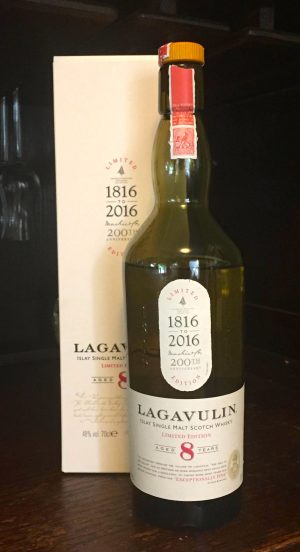
#6 – Lagavulin 8-Year-Old 200th Anniversary Edition (Score: 95/100)
Nose: Tons of kippery peat mixed with a fresh grainy sweetness, like multigrain bread toasted over an industrial fire and slathered in clover honey. Notes of briny salt overlay a fundamental freshness, aromas of ripe pear and soft dried apricot. There’s also a bit of hay-like character, but very lively and fresh-cut. Peat skews towards the maritime, but the smoke is bold too.
Palate: Unflinchingly smoky in a heavy, extinguished campfire kind of way. Lots of that kippered fish character sticks around from the nose, salty and iodine, without straying over into meatiness. Nice notes of pear candy and apple peel as well as a sweet, almost sticky malt character runs under the whole thing, tapering off to a long, dry, pleasantly ashy finish that hangs for a long time. So delightful that you’re loath to taste anything else.
Thoughts: This is whisky in HiDef – pure, clearly defined, unadorned, with a laser-like yet not overwhelming intensity. Despite its relatively high proof, it’s not particularly hot, and the balance between smoke and sweetness is hugely inviting. It’s like the essential core of what makes Lagavulin Lagavulin, stripped of any superfluous vanillins. Plus I appreciate how beautifully this bucks the twin contemporary Scotch trends of fantastically expensive luxury bottlings, and goofy NAS spirits. Effing great. I loved everything about this.
#5 – Highland Park 40-Year-Old (Score: 95/100)
Nose: All of the quintessential Highland Park notes from the 25-Year-Old and the 30-Year-Old are present. One can detect familiar “honeycomb heather,” for example, and gentle peaty notes, along with a kiss of the sea. However, these characteristics have been refined by another long stretch of time in the casks, as the angels took their share, leaving behind a veritable treasure.
A signature honeycomb-heather scent expands to reveal a meadow in summer time, with circulating heath grasses, pollens, and the gentle gurgle of a brook with light brown peat water. Indeed, smoked peat in the glass reminds me of farmers burning their fields in autumn. I just love that distant smokiness, which hovers delicately, almost like an afterthought.
Pine boughs and oak leaves on a forest floor at the edge of the meadow, waft up from the glass. Dry sand, and ocean breezes help to remind one of the Orcadian warehouses in which the casks were aged. Rich, fleshy fruits beckon the nose farther down into the rim of the glass, where an alcohol burn is delightfully absent. This lack of “alcohol tingle” is all the more surprising because of the relatively high 48.3% ABV.
Inside the glass, one encounters guava, mango, Canary melon, along with a potpourri of dried citrus peels. Time accentuates more of a honey profile, while diminishing the hint of smokey peat. After about twenty minutes, the heather-honey transforms itself from a familiar Highland Park heathery signature note to something more exotic, which might be compared to creamed honey, along with some cashew presence, as well.
Palate: A wonderful mixture of leather, oak, and old books greet the tongue. It’s like stepping into a private library filled with ancient leather-bound tomes, along with leather-backed chairs, and oak paneling everywhere. Remarkable. This impression illustrates how one’s sense of taste and smell can work in tandem to paint such a vivid picture. In your glass, you can taste what an old library smells like. A very strong impression of place. And then there comes a wave of peat and smoke, which does not overpower, but rather enhances one’s first impression of leather, wood, and books.
The mouth feel is not quite as oily as expected. This comes as something of a disappointment. If one looks on the bright side, however, less viscosity helps to bring out the peat smoke in a way that embraces this whisky’s “fleshy” fruit center. As in the nose, these fruits hang back, and wait to enchant. The “strawberry” side of the guava presence comes to the fore, mingling with heather-honey. There’s also a hint of brandy-soaked melon, along with the natural vanilla goodness of manila mango, which I find to be the “queen” of all fruit.
Finish: I haven’t whetted my tongue for a couple of minutes, and yet I’m still getting a bit of honey and smoke, along with papaya. After another sip, to refresh my palate, it becomes obvious that this finish just keeps going and going and going.
Almond paste lingers now, along with a hint of wood from sherry casks. No, Highland Park 40 Year Old is not over-oaked in the least, but a nice gentle oak presence does last throughout the finish. In my estimation, this influence hovers in the Goldilocks zone of “just right.”
After a long long finish, a little peat smoke comes back onto the tongue, along with a hint of buttery Scottish shortbread. Yummy! The dried citrus peel potpourri, which is present in the nose, does not translate into one’s mouth, however, and that’s fine.
Instead, this bitterness is more oaky. In fact, it’s just the right amount to offset sweeter, fruity notes, as well as augmenting the smoky peat. Without it, HP’s Forty Year-Old would lack balance, complexity, and depth. Yessir, yessum . . . I really do appreciate how long it takes this posh ride of a potion to reach completion (at the death).
Thoughts: As is the case these days with Highland Park limited releases, this whisky is packaged extraordinarily well. A silver amulet, which matches the “h” on the accompanying hand-made wooden box, adorns the bottle. Yes, the packaging has an ancient Norse style to it, which would make it a classy gift, especially considering the fact that History Channel’s program called “Vikings” is so popular these days.
How far Highland Park has come from the days of its old “dumpy” bottles and humble labels . . . at least in terms of packaging. Ah, but the whisky inside many of those goofy-looking bottles of yesteryear was nothing to trifle over. I tasted a dumpy Highland Park 18 last year, and the rather dark whisky inside was magnificent. Just beautiful.
Seems like just yesterday when I drank down my old bottle of Highland Park 25 Year Old, with the higher ABV, which came in a simple “black box.” It was cantankerous and mischievous, but that was part of the fun. Just when you’d thought you had figured it out, wham!, something totally different hit you up’side the head like a billy club. As The Jam, a 70’s British punk bank, sings: “That’s enter-tain-ment.” One minute the whisky tasted one way, and the next it seemed like an entirely different animal to tame (or perhaps one that tamed its drinker).
In some ways, I liked my Black Box 25 Year Old more than this newer Highland Park 40-Year-Old. Then again, I could definitely envision myself feeling in the mood for the relaxed effortlessness of a three thousand dollar “ticket to ride” . . . that is, if I happened to win the lottery. Yes, it’s mercurial. Yes, it changes in the glass, as well as on the palate. However, those changes are pretty much all civilized.
Speaking of which, I have one more swallow left in my glass: here’s to posterity, serendipity, and twenty-twenty hindsight.
 #4 – Michter’s Celebration Sour Mash 2016 Whiskey (Score: 95/100)
#4 – Michter’s Celebration Sour Mash 2016 Whiskey (Score: 95/100)
Nose: Initially leads with dried fig, dark brown sugar, caramel, milk chocolate, and tobacco. Soon after, classic notes of orange, cocoa, cherry wood, cigar box and peach appear. Given a minute’s rest, toasted oak and marshmallow comingle to become s’mores. For a 116-proof spirit, it’s not overly vaporous, a real joy to nose.
Palate: Dark caramel leads on entry, followed by cocoa, orange, vanilla and hints of tobacco, nearly mirroring its aromas. A bit of heat arrives at mid-palate mingled with slightly assertive grain notes (the 33-year-old rye having a say), pronounced but balanced oak and milk chocolate revisit with grassy rye on the finish. Though highly flavorful, it’s a bit lean bodied, but that’s consistent with the house style of Michter’s whiskeys. Expectedly, the finish is robust with oak and a little grain; short lived, but pleasantly warm.
Thoughts: Truthfully, it’s hard to sip a $5,000 bottle of whiskey without thinking, “I’M SIPPING A $5,000 BOTTLE OF WHISKEY!” and not letting that influence the score. Long story short, this is an exceptional sipper that delivers a complex collage of flavors and aromas that I don’t recall enjoying in any other. Depending on your preference, this is the Cary Grant (my wife’s choice) or the Grace Kelly (my choice) of whiskeys, a pour of indisputable elegance, structure and balance.
It’s also a whiskey bearing some history because it’s Pratt’s last pick. En route to retirement, the lifelong whiskey man became master distiller emeritus in September. So, the selection of the next Celebration will be up to Heilmann and Wilson, an endeavor that makes them grin to consider.
“Willie really outdid himself on this one, and this is his last release,” Heilmann said with the expected gravitas. “But we’re both looking forward to doing the next one.”
So, with all the history and flavor and aromas listed here, why doesn’t Celebration get a perfect score? Because I only got one shot at it, and an understandably small one at that. For me, reviewing a spirit fairly requires multiple, larger tastes, time for the whiskey to linger in the glass, even get some air into the bottle. Sometimes spirits improve over a few weeks’ tasting, other times not. So, to be fair to other whiskeys reviewed here under more extended scrutiny, a fractional deduction is in order.
 #3 – Pappy Van Winkle 23-Year-Old (Score: 96/100)
#3 – Pappy Van Winkle 23-Year-Old (Score: 96/100)
Nose: Dark earth, forest floor, chocolate, tobacco, prunes, with a hint of minerality that was mostly absent from the other expressions. This reminds me of a dark, anise-y red wine, maybe something from Sicily. A drop or two of water reveals heady vanilla, apricot custard, geranium leaf, plum, pine, and cherry while leaving that humus-y earthiness unchanged.
Palate: immensely powerful: dark cocoa, dry tobacco, toasted walnuts, dates, buckwheat, and coffee bean, but all tightly integrated with tingly tannins. It’s dry in the sense of powdery, with an incredibly long, earthy finish. That characteristic tartness I noticed in all of the other expressions is still present, but only as a faint whisper.
Thoughts: Where the 20 Year is lush and rounded, the 23 Year is more austere, yet more complex. This is a grown-up whiskey, assertive and self-possessed. It’s not an easy drinker, but it is a rewarding one, with seemingly endless layers of flavor that make me think the 23 Enigma is alive and well.
#2 – Pappy Van Winkle 20-Year-Old (Score: 99/100)
Nose: This is so, so rich: butterscotch, brown butter, fresh dark cherries dipped in milk chocolate, vanilla bean, sherry, Raisinettes, plum jam, figs, dark honey. Yet among it all there’s still a fundamental freshness, lemon pulp and lime zest. There’s a lot of oak character here, but it’s neither spicy nor astringent. In fact, there’s no sting at all – this is the kind of thing you can smell forever and never tire of.
Palate: Ugh, this is so good. The entry still has a bit of that characteristic lemony tartness but this time it’s offset by these very rich umami flavors: cherries soaked in sherry, hickory smoked jerky with a brown sugar liqueur. The mid-palate is enormous, with big leathery/nutty/sherry-like oxidized flavors as well as some very delicate cinnamon and nutmeg spice.
Finish is long and nutty yet somehow refreshing, finally leaving you resting on a delicate dark chocolate note. So delightful it makes you want to delay tasting anything else as long as possible.
Thoughts: This was a grand slam. Pappy Van Winkle 20-Year-Old tastes like a perfectly made dessert, hitting all the major flavor categories – bitter, sweet, savory, sour. I can’t think of anything else to say about this release except that it’s about as close to perfect as anything ever gets.
#1 – Gordon and MacPhail Generations Mortlach 75-Year-Old (Score: 99/100)
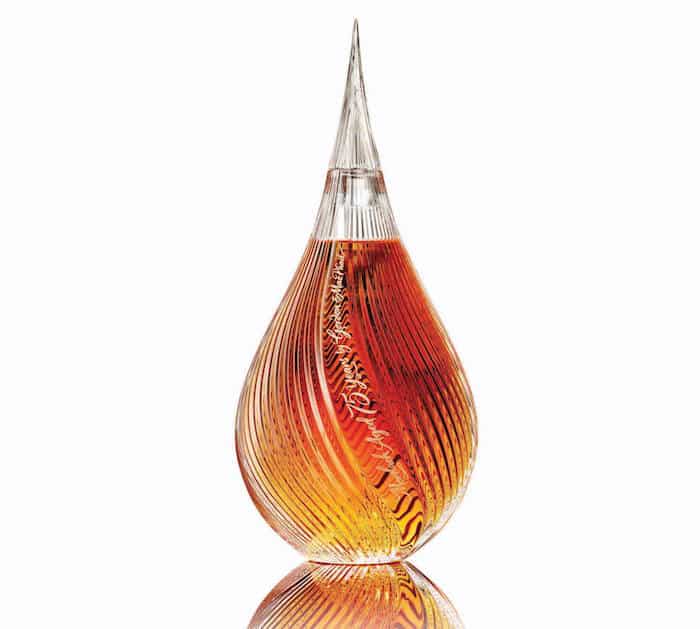
Nose: Elegant and harmonious. On the nose there is a cohesiveness, an integration of parts that only long aging can provide. The sherry cask influence is unmistakable. After a slight spirit note, there are waves of cooked fruit and Christmas fruitcake, cooked plum and prune, golden raisins, fig paste, and peach and apricot jams. The color is a light amber.
In the background there are some more exotic notes, ones not normally associated with Scotch whisky: a bit on incense perhaps, some sandalwood, exotic spice, faint echoes of a long ago trip through an oriental spice bazaar. There are also some very slight herbal notes, with hints of mint, and some dried herbs. In time, some cooked cereal and oatmeal aromas emerge, also typical of Mortlach whisky.
There is also a characteristic note of Mortlach that is variously described as old book leather, fresh cured leather, and even as a slab of raw meat. This aroma is typical of Mortlach and is associated with the retention of a greater proportion of sulfurous compounds by the cold worm tubs.
Palate: On the palate the Scotch is much drier than the nose would indicate. The fruit is still there, stone fruit, raisin, and fig, but dried rather than cooked or jammy. There is a more noticeable, but indistinct, floral element, like dried potpourri.
The hints of exotic spice, incense, and sandalwood are still present, along with notes of old lacquered wood, and even what might be a touch of smoke. At first that may seem strange because Mortlach is unpeated, but that has only been true since 1968.
This smoke is an artifact from long ago. Back in 1939, when Mortlach operated its own malting floor, coke and a bit of peat were used to dry the malted barley. That hint of smoke is all that is left of the peat burned 75 years ago.
There is a pronounced oily viscosity that we would expect from a sherry cask aged Mortlach. Sweeter notes emerge on the mid-palate and toward the end, with a distinctive peach and nectarine flavor, followed by some slight bitter almond and peach pit notes.
The finish is warming, long and subtle, ending with a pronounced note of dried peach and nectarine that just seems to linger forever.
The addition of a little water reduces the intensity of the floral and fruit elements, but paradoxically seems to bring out a broader range of these aromas. These are subtle, like old-fashioned aftershave or a barbershop, like old faded potpourri or the aromas of dried fruit in a farmhouse pantry. It also tends to emphasize the sweetness and oily viscosity of the whisky, creating a creamier, almost custard-like texture on the palate.
Thoughts: This is an extraordinary whisky, well integrated, balanced, and harmonious. Mortlach is justly famous for creating particularly complex, age-worthy whiskies. When that signature characteristic is combined with a properly orchestrated, extended aging, the results should be – and, in fact, are – stunning.
The Gordon & MacPhail 75 Year Old Mortlach has elegance and class, the sort of presence you associate with things and people whose extraordinary quality has withstood the test of time. If this whisky were a person it would be Ingrid Bergmann (as Charles MacLean suggested) or Sir Laurence Olivier, it would be Sir Winston Churchill or Pope John Paul II. (Am I the first reviewer to compare a Scotch whisky to a pope?) Or, maybe, a little bit of all of them.
Then again, at roughly $30,000 a bottle, should we expect anything else? For the cost conscious you could always opt for a single, one-ounce shot at roughly $3,000.
All in all, I’m not sure I could define perfection, but this comes damn close.

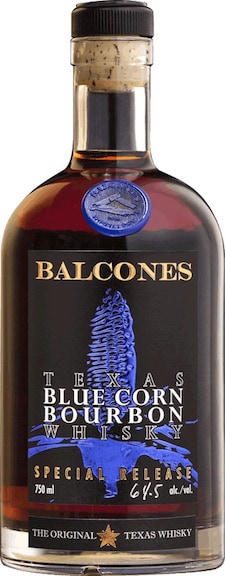 #10 –
#10 – 





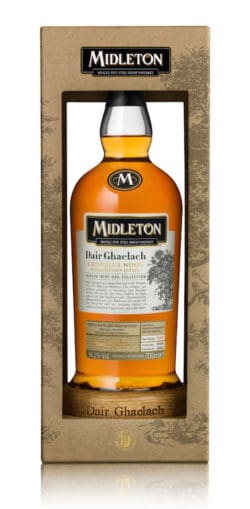 #8 –
#8 – 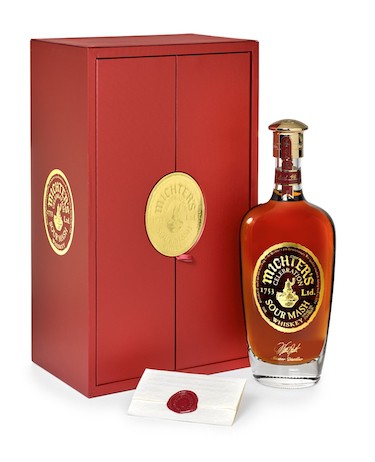 #4 –
#4 – 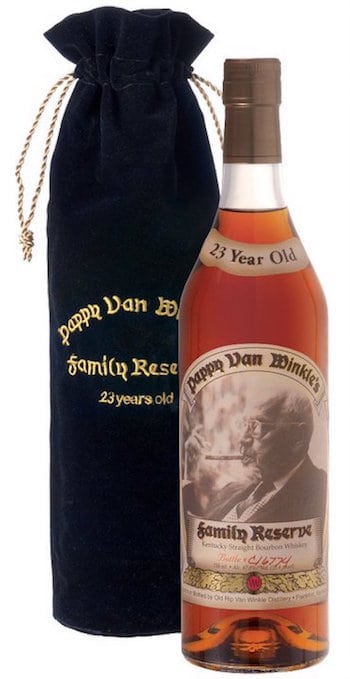 #3 –
#3 – 
